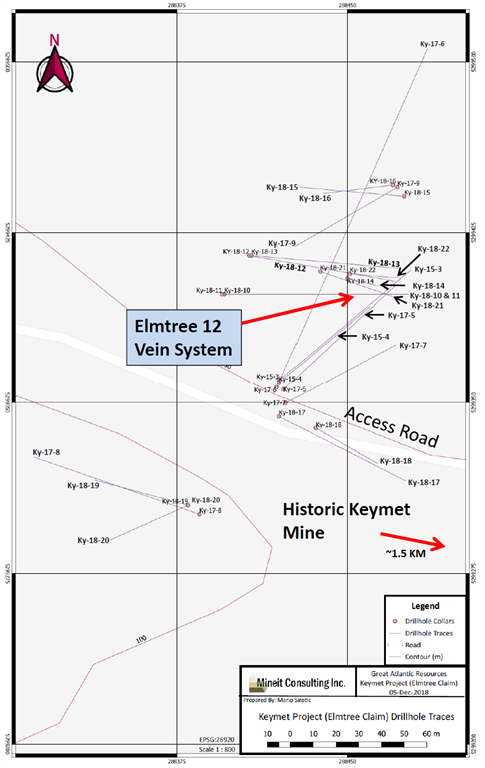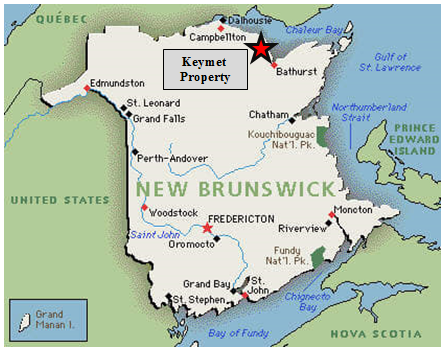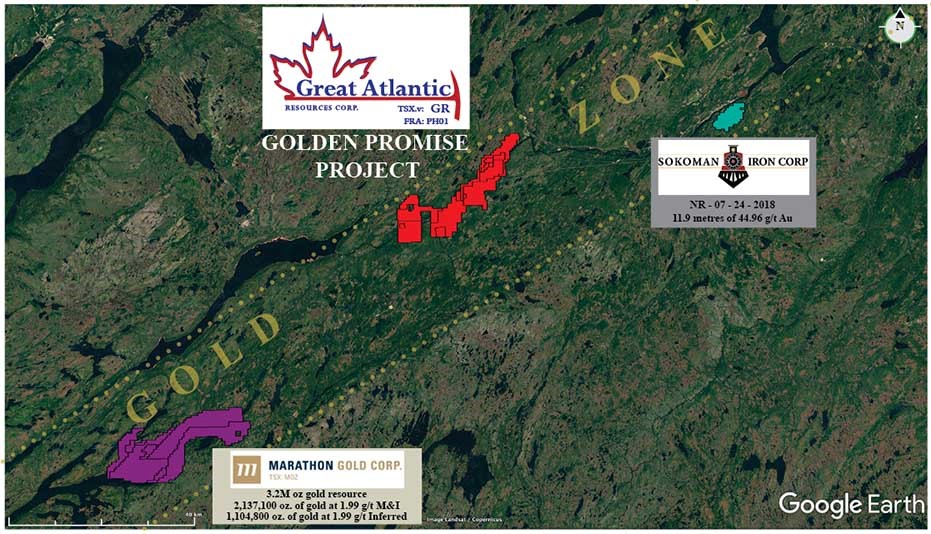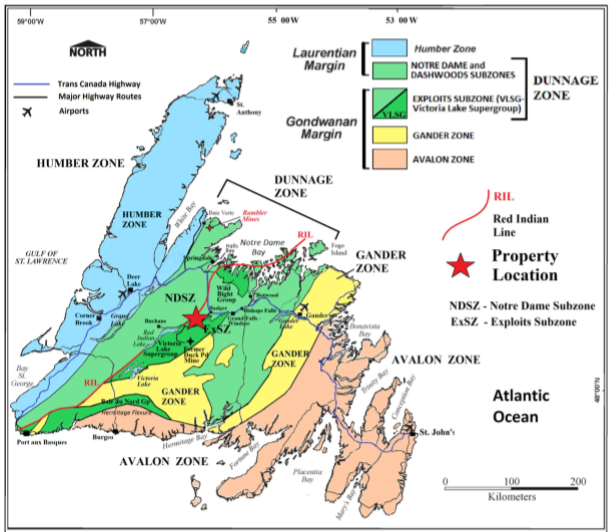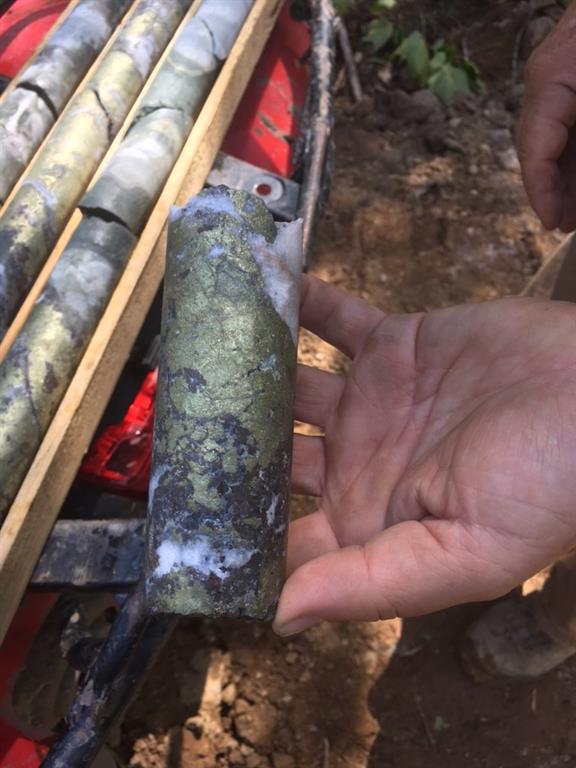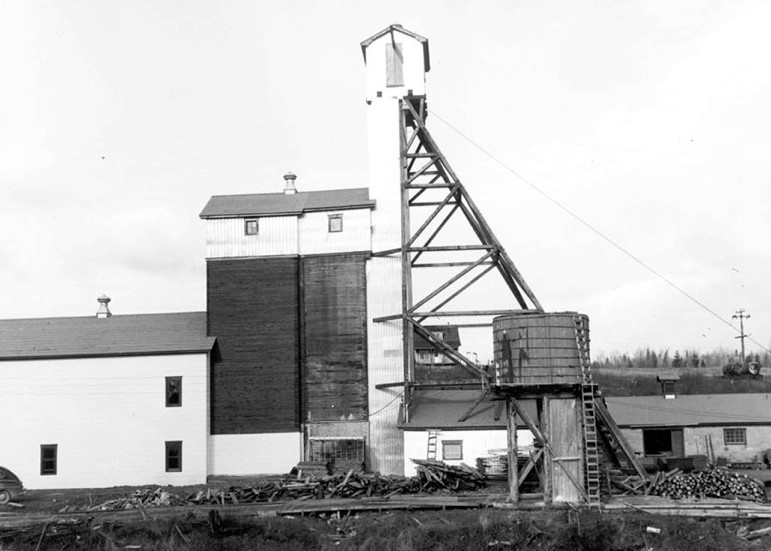- JV partner Tudor Gold announced the designation of a new gold zone at Treaty Creek which has been named “Goldstorm”
- The mineralization encountered to the northeast of Copper Belle has different characteristics, configuration and geometry.
- “Goldstorm is a much larger system than Copper Belle at 300m wide and extends vertically for over 700m
- Gold appears to be continuing towards the northeast and southeast and clearly becomes stronger in the northernmost hole, CB18-39 which returned 563.8 meters of 0.981 grams per tonne gold
Cardston, Alberta–(Newsfile Corp. – February 1, 2019) – American Creek Resources Ltd. (TSXV: AMK) (“the Corporation”) today reports that JV partner Tudor Gold announced the designation of a new gold zone at Treaty Creek which has been named “Goldstorm”. It was previously thought that gold mineralization identified by drilling northeast of the Copper Belle Zone was simply a northeast extension of that same zone, but after evaluating drill hole data from holes completed in 2016, 2017 and 2018, it appears that the mineralization encountered to the northeast of Copper Belle has different characteristics, configuration and geometry. While it is unclear whether the zones are genetically linked, these zones are physically separate. The surface drill hole location map at the end of this news release shows the location of both gold zones.
Tudor Gold Exploration Manager, Ken Konkin explains: “Goldstorm is a much larger system than Copper Belle, it is at least 300m wide and extends vertically for over 700m. The zone has been traced for approximately 500 meters along a northeastern azimuth. Gold mineralization appears to be continuing towards the northeast and southeast and clearly becomes stronger in the northernmost hole, CB18-39 which returned 563.8 meters of 0.981 grams per tonne gold. The upper portion of CB18-39 averaged 1.141 gpt gold over 280.5 meters and a lower zone in the same hole averaged 1.154 grams per tonne gold over 156 meters. This hole bottomed in mineralization and we will look at the option of re-entering the hole this year in attempts to extend the mineralization deeper. But the primary focus will be to extend the Goldstorm Zone along strike to the northeast and to the southeast as well.
Over the coming months, we hope to gain a better understanding of aspects that control gold mineralization. Re-examination of drill hole information has revealed the presence of a northwest dipping thrust fault that appears to define the upper contact of the Goldstorm system. The relationship of this fault to the formation of the mineral zone is an aspect of further study, as are the various styles of sulphide mineralization, silicification and alteration. Compilation and evaluation of this data will help in planning for the drilling campaign to be undertaken in the up-coming exploration season.”
The following table gives gold composite values over broad intervals from four drill hole sections that cut the Goldstorm Zone, incorporating results from diamond drill holes completed during 2016, 2017 and 2018. Low-grade gold mineralization occurs as a broad envelope which contains a horizon of stronger gold mineralization in the upper portion of the system. Furthermore, the drill hole sections demonstrate what appears to be the presence of a second, lower gold horizon. The corresponding sections 108+00 NE, 109+00 NE, 110+00 NE and 111+00 NE are displayed at the end of this news release.
Table I: Sections 108+00NE, 109+00NE, 110+00NE and 111+00NE Gold Composites

* All assay values are uncut and intervals reflect drilled intercept lengths.
* True widths of the mineralization have not been determined.
QA/QC
In 2016 and 2017, drill core samples were prepared and analyzed at Activation Laboratories Ltd. in Kamloops, BC. In 2018, drill core samples were prepared ALS Global’s Preparation Laboratory in Terrace, BC and assayed at ALS Global’s Geochemical Laboratory in North Vancouver, BC. Analytical accuracy and precision are monitored by the submission of blanks, certified standards and duplicate samples inserted at regular intervals into the sample stream by Tudor Gold personnel. Activation Laboratories and ALS Global Laboratories quality systems comply with the requirements for the International Standards ISO 17025: 2005.
QP
The Qualified Person for this new release for the purposes of National Instrument 43-101 is the Company’s Exploration Manager, Ken Konkin, P.Geo. He has read and approved the scientific and technical information that forms the basis for the disclosure contained in this news release.
Treaty Creek Joint Venture
The Treaty Creek Project is a joint venture between Tudor Gold, Teuton Resources Corp., and American Creek. Tudor is the operator and holds a 60% interest with both American Creek and Teuton each holding respective 20% carried interests in the property (fully carried until a production notice is given).
For more information about Treaty Creek click here.
About American Creek
American Creek is a mineral exploration company with a strong portfolio of gold and silver properties in British Columbia. Three of those properties are located in the prolific “Golden Triangle”; the Treaty Creek and Electrum joint venture projects with Tudor Gold/Walter Storm as well as the 100% owned past producing Dunwell Mine.
The Corporation recently completed a preliminary exploration program, including 2,000 meters of drilling, on its 100% owned Gold Hill project located in the Wild Horse River watershed of SE British Columbia. Assay results are pending.
The Corporation also holds the Austruck-Bonanza, Ample Goldmax, Silver Side, and Glitter King properties located in other prospective areas of the province.
For further information please contact Kelvin Burton at: Phone: 403 752-4040 or Email: [email protected]. Information relating to the Corporation is available on its website at www.americancreek.com
Neither the TSX Venture Exchange nor its Regulation Services Provider (as that term is defined in the policies of the TSX Venture Exchange) accepts responsibility for the adequacy or accuracy of this release.
Cautionary Statements regarding Forward-Looking Information
Certain statements contained in this press release constitute forward-looking information. These statements relate to future events or future performance. The use of any of the words “could”, “intend”, “expect”, “believe”, “will”, “projected”, “estimated” and similar expressions and statements relating to matters that are not historical facts are intended to identify forward-looking information and are based on the Corporation’s current belief or assumptions as to the outcome and timing of such future events. Actual future results may differ materially.
All statements including, without limitation, statements relating to the Goldstorm Zone as well as any other future plans, objectives or expectations of the Corporation are forward-looking statements that involve various risks and uncertainties. There can be no assurance that such statements will prove to be accurate and actual results and future events could differ materially from those anticipated in such statements. Important factors that could cause actual results to differ materially from the Corporation’s plans or expectations include risks relating to the actual results of current exploration activities, fluctuating gold prices, possibility of equipment breakdowns and delays, exploration cost overruns, availability of capital and financing, general economic, market or business conditions, regulatory changes, timeliness of government or regulatory approvals and other risks detailed herein and from time to time in the filings made by the Corporation with securities regulators. The Corporation expressly disclaims any intention or obligation to update or revise any forward-looking statements whether as a result of new information, future events or otherwise except as otherwise required by applicable securities legislation.

Figure 1
To view an enhanced version of Figure 1, please visit:
https://orders.newsfilecorp.com/files/682/42604_023f9190648c29b9_001full.jpg

Figure 2
To view an enhanced version of Figure 2, please visit:
https://orders.newsfilecorp.com/files/682/42604_023f9190648c29b9_002full.jpg

Figure 3
To view an enhanced version of Figure 3, please visit:
https://orders.newsfilecorp.com/files/682/42604_023f9190648c29b9_003full.jpg

Figure 4
To view an enhanced version of Figure 4, please visit:
https://orders.newsfilecorp.com/files/682/42604_023f9190648c29b9_004full.jpg

Figure 5
To view an enhanced version of Figure 5, please visit:
https://orders.newsfilecorp.com/files/682/42604_023f9190648c29b9_005full.jpg

Figure 6
To view an enhanced version of Figure 6, please visit:
https://orders.newsfilecorp.com/files/682/42604_023f9190648c29b9_006full.jpg



